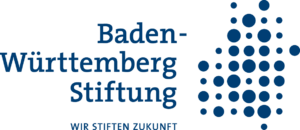INNER WORLDS
Sigmund Freud and Art
28-10-2023 - 03-03-2024
Sigmund Freud, the founder of psychoanalysis, revolutionized the concept of man at the beginning of the last century. His exploration of the “unconscious” became the driving force behind the European avant-garde of his time, and he shaped the culture of the 20th century like no other. For example, his idea that the way human beings feel, think and act was greatly influenced by the unconscious helped to generate the pan-European art movement Surrealism early in the last century.
Among Expressionists, his psychology unleashed a search for the self. In the immediate post-war period, and inspired by Freud, artists of Informalism and Abstract Expressionism both in Europe and America tried to render the creative forces of the unconscious in the material form of painting. The exhibition will be developed in cooperation with the Sigmund Freud Museum in Vienna and will trace the reception of Freud’s theories in art from the 20th century to today: from creative processes striving to ‘materialize’ inner worlds at the start of the last century, to the existentialist approaches of the post-war period, to Concept Art in the 1980s and feminist stances in post-modernism, all of which reflect, sometimes critically, the heritage of the master of psychoanalysis in the language of art.
An exhibition of the Kunsthalle Tübingen in cooperation with the Sigmund Freud Museum in Vienna
Curators: Dr. Nicole Fritz and Monika Pessler
with the kind support of the Helmut Klewan Collection
Artists of the exhibition:
Herbert Bayer, Hans Bellmer, Joseph Beuys, Louise Bourgeois, Victor Brauner, Barbara Breitenfellner, Günter Brus, Heidi Bucher, Gregory Crewdson, Salvador Dalí, Giorgio de Chirico, Paul Delvaux, Maya Deren, Max Ernst, Richard Gerstl, Alberto Giacometti, Walter Gramatté, Julie Hayward, Birgit Jürgenssen, William Kentridge, Käthe Kollwitz, Oskar Kokoschka, Juro Kubicek, Rachel Lachowicz, Robert Longo, René Magritte, André Masson, René Magritte, Hermann Nitsch, Richard Oelze, Hans Op de Beeck, Meret Oppenheim, Man Ray, Arnulf Rainer, Markus Schinwald, Nadja Schöllhammer, Esther Shalev-Gerz, Sammlung Helmut Klewan, Cindy Sherman, Haim Steinberg, Hermann Struck, Raoul Ubac, Umbo, Raphaela Vogel, Kay Walkowiak, Jeff Wall, Franz West, Francesca Woodman, Thomas Zipp, Heimo Zobernig
The exhibition is sponsored by

Recent Comments